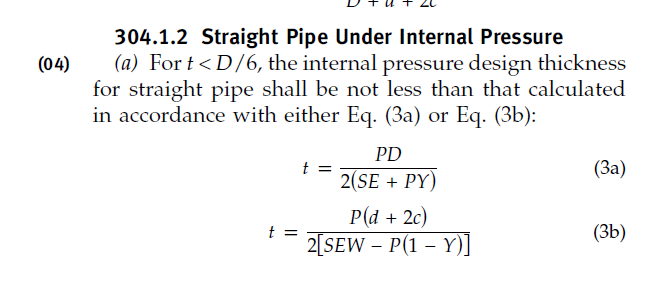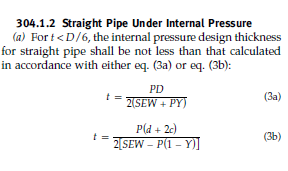Hi all,
The facility that I work in was constructed using the B31.3 2004 edition. So piping minimum thicknesses are calculated using this edition.
Have used the 2008 edition and beyond, I saw that the W factor was introduced in 2004 however only one of the thickness equations whilst from 2006 and beyond has it in both equations.
Is there any addendum or interpretations/reasoning for the omission in the 2004 edition? I couldn't seem to find any. So calculation of tmin would find things acceptable whilst the 2006 edition and beyond would deem it unacceptable.
2004 Code

2006 Code

The facility that I work in was constructed using the B31.3 2004 edition. So piping minimum thicknesses are calculated using this edition.
Have used the 2008 edition and beyond, I saw that the W factor was introduced in 2004 however only one of the thickness equations whilst from 2006 and beyond has it in both equations.
Is there any addendum or interpretations/reasoning for the omission in the 2004 edition? I couldn't seem to find any. So calculation of tmin would find things acceptable whilst the 2006 edition and beyond would deem it unacceptable.
2004 Code

2006 Code

